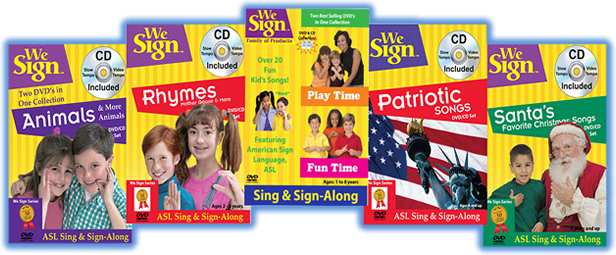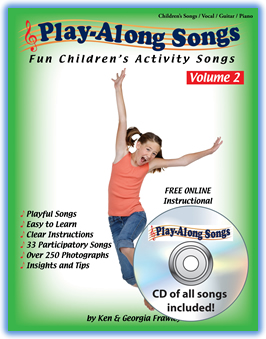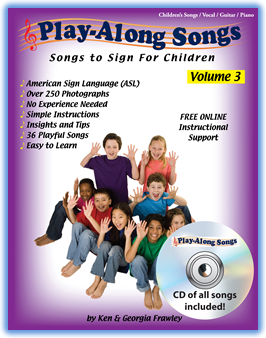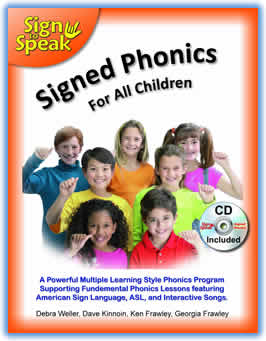
Sign Language for Kids
Preschool and Elementary Ages
Sign language for kids, especially preschool and elementary ages, is a playful, challenging, language-rich, activity that uses a variety of learning styles. Sign language for kids has been proven to parents, teachers, and early childhood educators across the country to be a powerful learning tool. Signing is not only used to strengthen vocabulary, improve vocabulary, and support reading readiness, but using sign language with preschoolers and elementary children will also provide learning through a fun bonding activity.
Preschoolers and elementary children (especially k-3) are now expected to know and recall much more information then kids just a generation ago. Parents and teachers have found that using sign language is a fun and playful way to teach vocabulary, language skills, core educational concepts, and enhance reading readiness. Best of all, no experience in signing is necessary to bring the many benefits it offers to hearing kids.
From as early as the mid 1800's advantages offered to hearing kids who signed were documented. Thomas Hopkins Gallaudet, developer of American Sign Language, saw that hearing children's language development increased from the use of sign. This led him to believe that “the more varied the form under which language is presented to the mind through the various senses, the more perfect will be the knowledge of it acquired, and the more permanently will it be retained," (Daniels, Marilyn, Dancing With Words, Signing for Hearing Children's Literacy, Bergin & Garvey, Westport, CT, 2001 p.126)
Research across the U.S. and in many other parts of the world has shown that teaching sign language for kids, especially the use of American Sign Language, ASL, alongside verbal communication offers many benefits including:
- Sign language for kids develops an enthusiasm for learning.
Signing ASL with kids is a fun and playful learning activity, especially when combined with songs. Kids of all ages love to learn when they get to move, say, sing, see, and sign all at the same time. Setting up special signing times allows children to look forward to signing activities as well as developing an enthusiasm for learning new words, ideas, concepts, songs, and more.
- Sign Language for kids stimulates brain development.
When kids use ASL signs, this learning activity has been shown to stimulate brain development in young children. Signing activities used in combination with spoken words encourages the brain to build synapses and dendrites in a variety of locations to store information learned in a variety of different ways.
- Sign language for kids builds fine and gross motor skills.
Using sign language for kids is a great way for children to develop fine and gross motor skills. ASL signs require children to move their fingers, hands, and arms in specific ways to create words. These specific sign language movements not only have kids focusing on controlling their body movements but help them develop hand–eye coordination as they watch the movements they make.
- Sign language for kids uses a variety of multiple intelligences.
Signing with kids is a “varied form” or multi-sensory approach to learning. Basically, kids do not have fixed intelligence nor do they all learn the same way. Kids learn in multiple ways and their intelligence is developing continuously. Signing with kids allows them to learn in multiple ways. Howard Gardner offers a list of Multiple Intelligences that are widely accepted today:-
Physical learning (movement); Signing with kids provides physical learning - this through hand manipulation, arm and body movement and facial expression;
-
Visual learning (seeing): Hand signs are visual by their nature and many of them are iconic (signs that look like what they are) allowing kids to see the word they are learning.
-
Verbal learning (speaking or listening): Sign language for kids when combined with spoken word and words sung in songs allows them to say and hear the words at the same time.
-
Musical learning (music, rhythm, melody): Using sign language for kids with songs also allows children to learn musically. Songs provide rhythms, rhymes and melodies used to support learning.
-
Mathematical learning (reasoning): Songs with sign language also encourage kids to learn mathematically as a result of the structure and sequencing involved in singing songs;
-
Interpersonal learning (with other people): The entire family and the entire class will benefit from signing together and will learn from this interaction.
-
Intrapersonal learning (individual learning): sign language for kids allows them to review their words in a playful way at any time fostering individual learning.
-
- Sign language for kids will increase vocabulary and language skills.
Kids who learn sign language will have up to twice the usable vocabulary with the combination of signed and spoken words compared to their non-signing counterparts. Sign language provides kids with a way to feel, move, and see words allowing them to have more understanding. This understanding in turn allows them to use language for more communication and develop even more words.
- Sign language for kids enhances memorization and recall.
Research demonstrates that when signing is added to the preschool curriculum, children not only find signing fun but also show a “significant improvement in receptive English vocabulary” (p40-41), and retain information for longer periods of time. Marilyn Daniels found that the significant “vocabulary gains made in their pre-kindergarten years are sustained throughout their kindergarten year and remain with them. There is no memory decay over time.” Daniels, Marilyn, Dancing With Words, Signing for Hearing Children’s Literacy, Bergin & Garvey, Westport, CT, 2001, pg49.
- Sign language for kids strengthens scaffolding.
Scaffolding is the building of one skill or set of knowledge upon what has already been learned allowing kids to raise themselves up to the next level of learning. Sign language for kids enhances this development by allowing information to be memorized in a variety of ways and developing greater recall abilities for this information. - Sign language for kids improves reading readiness.
Reading is the cornerstone to every year of their educational process. Learning to read is one of the most important skills children are learning in the early years of the educational process. The ability to recognize letters, sounds and words and then understand their meaning quickly and effortlessly is crucial. Children first learn to read and then they read to learn. Sign language for kids helps kids learn to read by improving reading readiness skills.Download a free copy of the ABC’s
- Kids who use sign language have been found to have twice the usable vocabulary of non-signing children. This means that signing children recognize and understand the meaning to lots of words so when they are learning to read, they will easily recognize and understand the meanings of the words they are learning to read.
- Sign language offers kids a physical and visual way to learn the letters of the alphabet. Kids will readily develop sight recognition for the letters of the alphabet when combining the spoken letter sound with the ASL letter sign. The ABC song is so popular and ASL helps to separate LMNOP into separate and distinct letters for younger kids.
- Sign language connects sounds to not only written letters but to letters that they can make and move with their bodies.
- Sign language for kids helps them to learn to manipulate letters, sounds and to spell before they are able to write.
- Kids learn core concepts with sign language for kids.
Using sign language with kids to support the learning, memorization and recall of Core Educational Concepts that include: ABCs, Numbers, Colors, Rhymes, and Animals strengthens the foundation for early education.
- Songs and sign language for kids are rich learning activities.
When parents and teachers use sign language for kids in conjunction with songs you are allowing your preschool and elementary student to not only learn using a wide variety of learning styles but to also learn in a fun and playful way. Think of how well adults still remember the movement songs from childhood, like the Itsy Bitsy Spider. This is the same way signing with songs provides kids with a strong memorization and recall tool.
- Enhance self esteem with sign language for kids.
Learning sign language enhances children's self-esteem and helps to encourage a real enthusiasm for learning. Kids find sign language to be an interesting, enjoyable, and challenging activity that they can be successful at learning.
There is no doubt that sign language for kids and sign language songs for kids provide real benefits while being fun and playful activities. It is easy for parents and teachers and early childhood professionals to learn and teach.
LEARN MORE
Classroom Management
Classroom Management
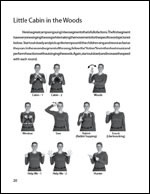
For preschool and early elementary children Classroom Management signs are a wonderful way to use silent behavior controls. Teachers find that when they use signing as part of their daily routine children keep focused on them and they pay attention. This is due to the visual nature of signing; you must see the sign to understand it. Commands like walk, line up, sit down and quiet can be signed and understood over distances rather than speaking loudly. Signed commands lead to a quieter and pleasant classroom with less nagging and fewer reminders to pay attention. Teachers report that children love to learn sign and it actually “goes a long way to generating an enthusiasm for learning in their students.” (Daniels p.75)
